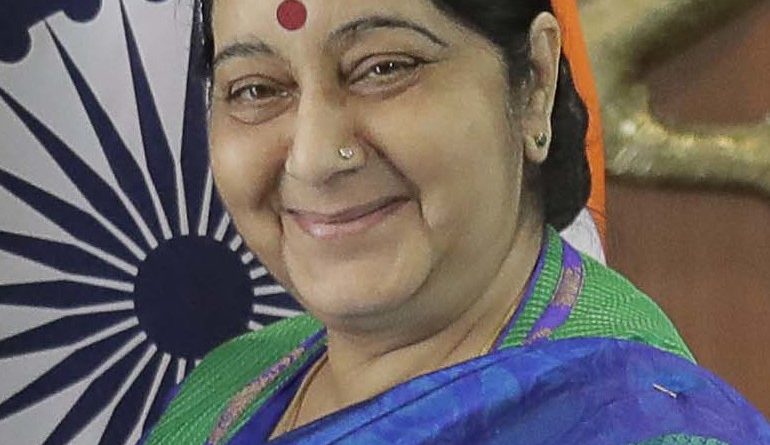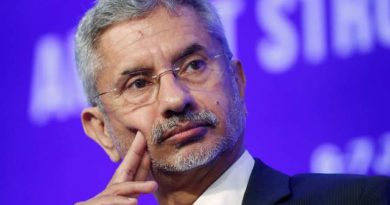External Affairs Minister’s interview to Prothom Alo, Bangladesh
Question:What according to you are the outcomes of this visit?
External Affairs Minister. I came to Bangladesh, on my first trip abroad as India’s External Affairs Minister, with a message of friendship from the newly elected Government of India.
This visit has allowed me an opportunity to exchange views with your senior leadership on the current state of bilateral relations. The discussions that I had with your leadership were extremely cordial and fruitful and could form the basis for the future agenda of cooperation. As a result of this visit, both countries have moved forward on a host of issues that would provide impetus to trade, connectivity, power sector cooperation and people to people contacts.
I think the stage is set for a qualitative transformation in our bilateral relations. Given the problems that afflict this part of the world, it is our responsibility to intensify cooperation to eradicate poverty, illiteracy and hunger and fight against forces of terrorism, extremism and fundamentalism.
Question: There has been immense progress in respect of relations between Bangladesh-India though some historic issues are yet to be resolved. For instance, the issues of water sharing of the Teesta and border treaty have not been solved by the last UPA Government due to indecisive political stand of the Central Government. BJP is now in power with an overwhelming majority. Can Bangladesh expect solutions to these problems immediately?
External Affairs Minister.Our Government is not only committed to maintaining but also building on the momentum of the relationship that we have seen in the last few years.
We are in the process of building an internal consensus on the issue of Teesta water Sharing. The Constitutional Amendment Bill to enable the ratification of the Land Boundary Agreement is currently in the Rajya Sabha and political consultations are underway with regard to its passage.
Question: BJP had been so much against Bangladeshi immigrants staying in India while campaigning during recent Lok Sabha elections. BJP leaders are still raising their voice on this issue. On the other hand, BJP Government is eager to develop relationships with the neighbors. Isn’t such a position contradictory? People of both the countries are staying in neighboring countries for employments. In that case if any country takes serious stand against citizens of neighboring countries, won’t it put negative impact upon the bilateral relations of the two countries?
External Affairs Minister.The issue of illegal migrants is a sensitive subject in any country and needs careful handling. We propose to address this issue through discussion and with the involvement of all stake-holders.
This also brings me to the issue of better management of our borders which is a mutual responsibility. The India-Bangladesh border is the longest border that India has with any country. This border is one of the most porous, poor and densely populated, therefore, a lot of illegal activities take place along these borders. We believe that the security of India and the security of Bangladesh are interlinked. Both the countries have no other option but to work together to bring about a border area which is free from such activities. Our border region can be prosperous only when they are secure, and we strengthen the rule of law. We should protect the innocent and the vulnerable from unscrupulous elements.
Question: India has got everything out of Awami League Government but has given nothing in return. This has been a one-sided relationship where India has not fulfilled its commitments. Your Comments.
External Affairs Minister:This perception is not true. Our relationship is a two-way street.
We have made concrete progress in several areas of cooperation and we have always proceeded on the basis of mutual benefit. In areas like trade, market access, power, border management, development cooperation, infrastructure, people to people exchanges including youth exchanges and exchanges of media persons, we have broken new ground. Let me illustrate with a few examples:
We have improved our border management system through a web of institutional mechanisms, a Coordinated Border Management Plan, an Extradition Treaty, opening of border haats, revival of DC/DM level talks and upgradation of border infrastructure. To help address the trade imbalance, Indian market has been opened to all Bangladeshi products except for 25 tariff lines on zero duty zero tariff basis. Bangladesh exports to India last year were the highest ever recorded. Bangladesh is emerging as a prospective destination for major Indian investments.
Concrete improvements have come about in trade infrastructure. New Integrated Check Posts are coming up.
Standard Operating Procedures have been signed to facilitate road and rail transit traffic between Nepal, Bhutan and Bangladesh. A One billion dollar Credit Line, the largest single such Line we have given to any country, is in advanced stage of implementation involving 15 projects, of which 200 million dollars has been converted to grant.
New initiatives are underway in social sectors such as IT, education, health, environment and Small Development Projects.
For the first time, inter-grid connectivity for flow of power has been established with a capacity of 500MW of power, and is functional. Other power and energy related initiatives are under discussion and implementation.
We have begun talks on sub-regional cooperation.
Bilateral Cooperation in the railways sector is stronger than ever before, and measures are underway to make travel easier on the Maitree Express.
Both Countries have opened discussions on coastal shipping, and direct contacts have been established between different ports of Bangladesh and ports on India’s Eastern coast.
People to People links have become more streamlined, regular and common place. Significant increases in bilateral cooperation in the area of training, capacity building and skill development have taken place. Cultural exchanges are taking place in both directions.
However, I am aware that much more needs to be done. We cannot be satisfied with what we have accomplished so far.
Question: Dhaka feels that there has not been enough progress in removing Bangladesh- India trade discrimination instead of initiatives taken at different times. Especially psychological obstacle is a big cause alongside tariff or non tariff obstacles. Will new Indian government take steps to remove such obstacles?
External Affairs Minister.We are sensitive to Bangladesh’s views on matters relating to the trade deficit.
Bangladesh has become India’s largest trading partner in the SAARC region in Financial Year 2012-13 with Bangladesh Exports to India growing by 13.5% over the previous financial year to US $ 563.96 Million.
There exist several Government mechanisms like the Joint Working Group on Trade and Joint Group on Customs which meet yearly to discuss and solve impediments to trade between the two countries. Some of the recent achievements of these meetings have been to allow 7 days trading in Benapole-Petrapole and Agartala–Akhaura Land Customs Stations. 16 major Land Customs Stations have also been identified for synchronization of days and timing of operation. We are also cooperating with BSTI to build up its capabilities in terms of testing and standards.
The rate of growth of Bangladesh exports to India is higher that the growth of India’s exports to Bangladesh. Many of the Indian export items to Bangladesh serve as raw material and intermediate goods for Bangladeshi export oriented sectors such as the Ready Made Garments.
India has also embarked on an ambitious project to upgrade infrastructure in 16 major Land Customs stations in the border with Bangladesh to an Integrated Check Post. This will see all facilities like Customs, Immigration, parking, cold storage, and quarantine facilities etc within one integrated complex. The Integrated Check Post in Agartala has been completed and in operation since November 2013.
Two border Haats are operational between India and Bangladesh along the border with Meghalaya. I am also happy to note that two more such Haats are under construction along the border with Tripura and four more have been agreed upon in the recent meeting of the Joint Working Group on Trade held in Dhaka in March 2014.
In the medium and long term, we have to focus on more investments in Bangladesh that will enable Bangladesh to build export surpluses, diversify its export basket and better exploit the markets that are available in its neighbourhood and beyond.
Question: The people of Bangladesh feel that there is a `special relationship’ between India’s Congress Party Government and the Awami League Government. In case of change in power in India, will there be any qualitative change between the present two governments?
External Affairs Minister:That may be your perception. As far as our Government is concerned we will build our relations with the Government of the day in Bangladesh. Relations between two countries depend on the quality of relations between the peoples and the two Governments. We wish to build a broad-based and inclusive partnership with Bangladesh, involving all sections of the society.
Question: Earlier the UPA government had supported the January 5 election that was non-participatory. Does the present BJP government think it was justifiable?
External Affairs Minister: It is not for us to sit on judgment on elections in Bangladesh. It is for the people of Bangladesh to decide on their political future. Our approach is a forward looking approach, taking into account the critical role which India-Bangladesh relations can play in the destiny of both our countries.
Question: One of the elements needed for bilateral relationship is to create opportunities for people to come closer. But it is alleged that the Bangladeshis intending to visit India face visa problems. Will you take initiatives to ease the visa process?
External Affairs Minister: Bangladesh is a friend and a neighbour. We are committed to further intensifying people to people exchanges through youth exchanges, business exchanges, cultural exchanges, exchanges of media personnel, civil society, and so on.
We will look into the specific visa problems that are being faced. Already, the number of Bangladeshi tourists visiting India is the third highest in number.




